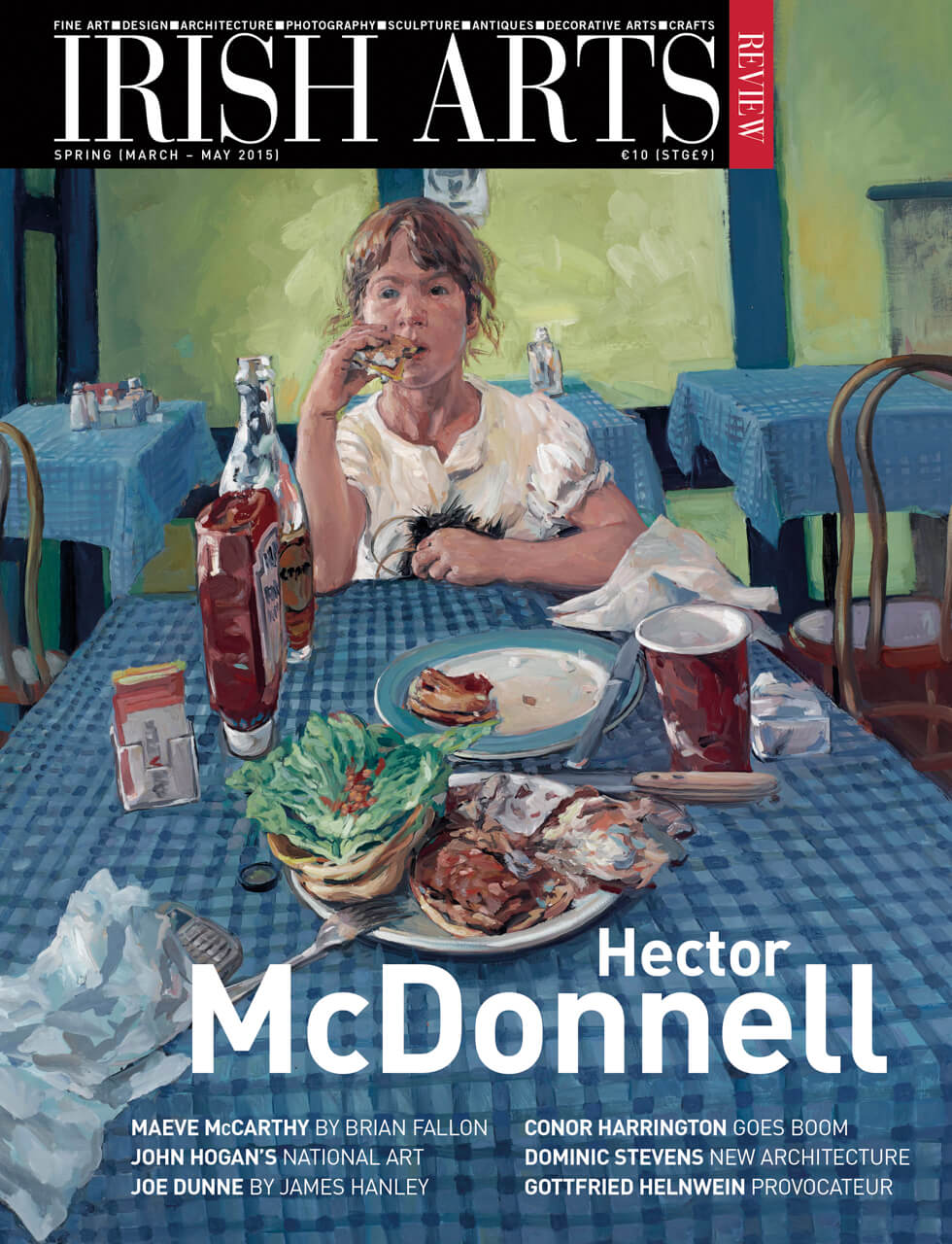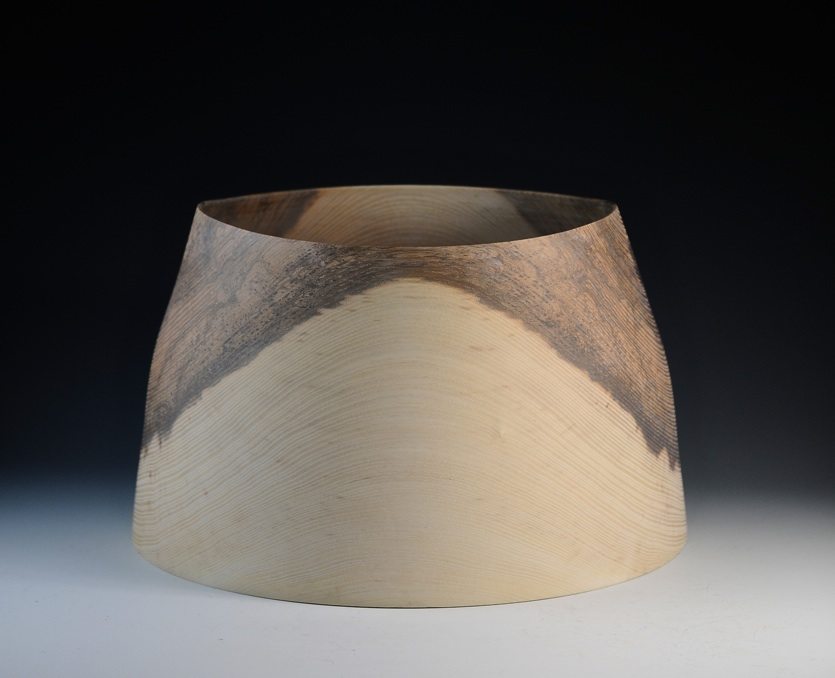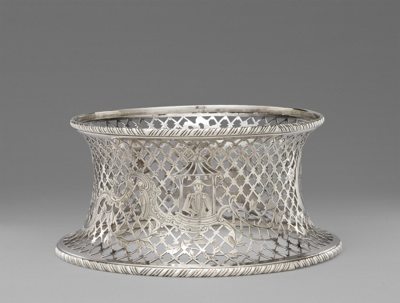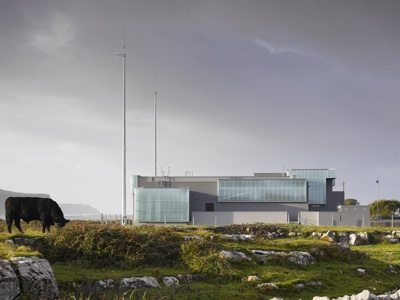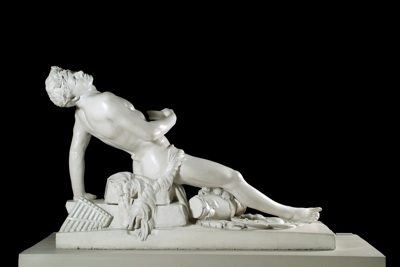
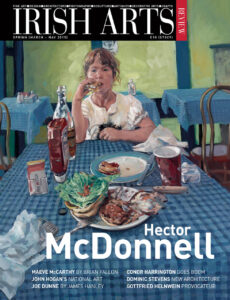
Michael Waldron tracks the shaping of John Hogan’s national art as championed by Young Irelander Thomas Davis
President Higgins’ recent unveiling of a statue in Mallow of Thomas Davis in celebration of the Young Irelander’s bicentenary should generate increased interest in the writer’s place in the formation of Irish national thought. Made in bronze by Dublin’s Cast Foundry and installed as the centrepiece of the North Cork town’s regeneration scheme, it is hoped that similar interest will also be paid to its original sculptor, John Hogan (1800-58). Representing ‘Davis as dreamer and thinker,’ as John Turpin has observed, this commemorative statue already exists in two versions made by Hogan’s own hand (Crawford Art Gallery and Dublin City Hall) which stand as testament to the relationship between the artist and his subject.
In ‘National Art,’ first published in The Nation 14 October 1843, Davis acknowledged Hogan as one of the ‘high names’ Ireland boasts. He bemoaned, however, that, as with Daniel Maclise and William Mulready, his work was ‘seldom done for Ireland’ and ‘rarely known in it.’ Tellingly, it is after this date that the majority of Hogan’s Irish subjects emerge even if, as Turpin has noted, ‘virtually all of Hogan’s commissions originated in Ireland.’ Despite being known in his own day as the ‘Irish Sculptor’ (and his current inclusion in the ‘Trove’ exhibition at IMMA), a lack of knowledge and appreciation of his work still persists in his native country.
The facts of Hogan’s life are well established thanks in no small part to Turpin’s definitive biography and catalogue raisonné (Irish Academic Press, 1982). Joining the firm of architect Thomas Deane in 1818, his early interest in architecture – evidenced by recently exhibited sketchbooks at Crawford Art Gallery – was soon supplanted by an appetite for sculpture. This was greatly assisted by the arrival in Cork of a collection of Greco-Roman casts in that same year, with Hogan attending classes at the newly formed Cork School of Art alongside his brother Richard, Samuel Forde, and Daniel Maclise. Later coming to the notice of art critic William Paulet Carey, Hogan was encouraged to move to Rome in 1824, returning only intermittently to Ireland for the delivery of works and garnering of new commissions until ultimately resettling in Dublin in 1849.
His finest early works include a pinewood Minerva, plaster Drunken Faun (both Crawford Art Gallery), and marble Dead Christ (St Teresa’s, Clarendon Street). These latter two are the works that established his name in Rome, while a Shepherd Boy (1824-5) acquired by Richard Wingfield, 6th Viscount Powerscourt, and Eve Startled at the Sight of Death (1827, untraced) made for Sir John Fleming-Leicester, highlight his early vacillation between mythological and religious subjects. The Italian Shepherd Boy (1846) at Iveagh House, though perhaps more accomplished than the Powerscourt composition is, however, a rarity in his later oeuvre which is dominated by portraiture and funerary monuments. Indeed, fulfilling the demand from nationalist figures and bodies, Hogan can be seen to have responded in his own way to Davis’ call for a national art. The result of a competition process, his Monument to Bishop Doyle (1839) at Carlow Cathedral is a case in point and established his interest in monumental nationalist subjects.
The Carlow monument commemorates James Warren Doyle (1786-1834), Bishop of Kildare and Leighlin, and represented an important Catholic commission for Hogan. Unlike the Davis statue, Doyle (or JKL as he was known) is here depicted not in neoclassical drapery but in full cassock and surplice, a man of action rather than contemplation; his right hand raised in gesture, his left brushing the back of a kneeling figure of Erin or Hibernia. This female allegorical figure bearing a harp and wearing a mural crown embodies the collective grief at JKL’s passing. It is the first appearance of this favoured Hogan trope which can be found in bas relief on the pedestal for his statue of William Crawford (Fig 2) which was executed for the Cork Savings Bank in 1843 (now in Crawford Art Gallery).
Less a study in psychology than in bearing, the sculptor knew his subject and had benefited from Crawford’s early patronage. As with Davis, the merchant prince is represented in contemporary dress and wrapped in a classicizing riding cloak. The artist’s name appearing in distinctive monogram by Crawford’s left ankle, Hogan’s over life-sized portrait sensitively communicates his subject’s erudition which is here underscored by his literary attributes and the head of Minerva beneath his cloak. Completed at the same time, Hogan’s Thomas Drummond (1843) at Dublin City Hall is similarly represented as statesman-like, civic-minded, and compellingly attractive. Both with a hand placed over his heart in memoriam, they demonstrate a sculptor operating at the height of his powers as a portraitist and would pave the way for his two Daniel O’Connell monuments.
Poet’s Corner
thomas davis’ Lines to HoganChisel the likeness of The Chief
Not in gaiety, nor grief
Change not by your art to stone
Ireland’s laugh or Ireland’s moan.
Dark her tale, and none can tell
Its fearful chronicle so well.
Glorious the marble which could show
His bursting sympathy for woe;
Could catch the pathos, flowing wild
Like mother’s milk to craving child
Extract from the Poet’s Corner in The Nation addressed by Thomas Davis to the sculptor John Hogan as he commenced his monumental marble sculpture of Daniel O’Connell now in Dublin’s City Hall.
While the posthumous bronze portrait of O’Connell (1856) in Limerick’s Crescent follows in the quiet, pensive mode of his earlier Davis statue, Hogan’s monumental marble sculpture of The Liberator in Dublin City Hall is perhaps his most towering achievement (Fig 7). Hogan carefully selected a pristine block of marble at Saravezza for this which was to bring Rome to a standstill when hauled through the city in 1845. He wished, as John Pigot related, for the statue to ‘express all the power and grandeur of concentrated Ireland.’ Encouraged by Davis to ‘Chisel the likeness of the Chief / Not in gaiety, nor grief,’ the resulting monument depicts its subject as heroic orator. O’Connell himself donated a substantial sum towards the commission and had met Hogan at the Mullaghmast ‘monster meeting’ of 1 October 1843. Indeed, dressed in his uniform of the Virtuosi del Pantheon, Hogan was to crown O’Connell with the repeal cap on the occasion at the Emancipator’s own request, reputedly stating ‘Sir, I only regret that this cap is not of gold.’ In executing the work, he must have been mindful of this extraordinary moment and the ‘Deeds which are monuments of men’ from John Augustus Shea’s Clontarf, which had been read at the meeting.
The confluence of O’Connell, Clontarf and a symbolic crowning was not lost on Hogan who would return to the theme in the ‘most important imaginative work’ of his late career. While borrowing heavily from his own Hibernia with a Bust of Cloncurry (1844, UCD), Hibernia and Brian Boroimhe (1855, Crawford Art Gallery) ‘epitomises abstract patriotic ideas in sculpture’ and differs from the former in that it is not commemorative. Consisting of a similar seated Hibernia, she is here in maternal guise, nurturing the boy Brian, with a wreath of oak leaves held in waiting by her side. Hibernia, at once neoclassical and Irish, wears the familiar mural crown of the Doyle and Crawford monuments. Meeting her gaze, Brian gains a foothold upon an Irish wolfhound after the manner of C√∫ Chulainn and holds a down-turned sword. Shamrocks woven through his hair, Brian here stands quite deliberately for Young Ireland, yet eschews the violence of the 1848 rebellion, perhaps in favour of the political agitation and oratory of Hogan’s heroes, O’Connell and Davis.
This is also Hogan’s most political work, meditating on good and legitimate government in the aftermath of the Great Famine. That it is executed in plaster, much like his Drunken Faun, highlights that this was not a commission but a work of his own invention. In it he develops aspects from his earlier oeuvre, adapting them towards a new, more universal theme and conflating the European past with an Irish future, thus legitimizing Irish culture as significant, unique and ancient. That Hibernia and Brian Boroimhe was never committed to stone or bronze is, however, rather telling. The great commissions of the day, such as the Thomas Moore monument lately removed from Dublin’s College Street, were often to elude Hogan and may owe as much to his own stoicism and difficult manner as any parochialism.
His work is nonetheless part of the narrative of Irish national art contributing, as it does, to the project Davis called for in 1843. That both Davis and O’Connell were to predecease Hogan ensured that his work remained largely under championed, particularly as artistic taste moved away from his own austere classicism. In this decade of so many national centenaries, it is timely to consider artists such as Hogan’s role in and method of commemoration. Occupying ‘an important position as the first sculptor to deal with national themes’ in Ireland, Hogan’s contribution and legacy thus deserves further recognition. Looking upon his unfinished works shortly before his death in March 1858, Hogan is reputed to have instructed his son and assistant to ‘Finish it well, boys, I shall never handle the chisel more’. It is perhaps the most fitting epitaph to the artist and charge to those who would continue the national project.
Michael Waldron teaches European Art History at University College Cork.
From the IAR Archive
First published in the Irish Arts Review Vol 32, No 1, 2015
